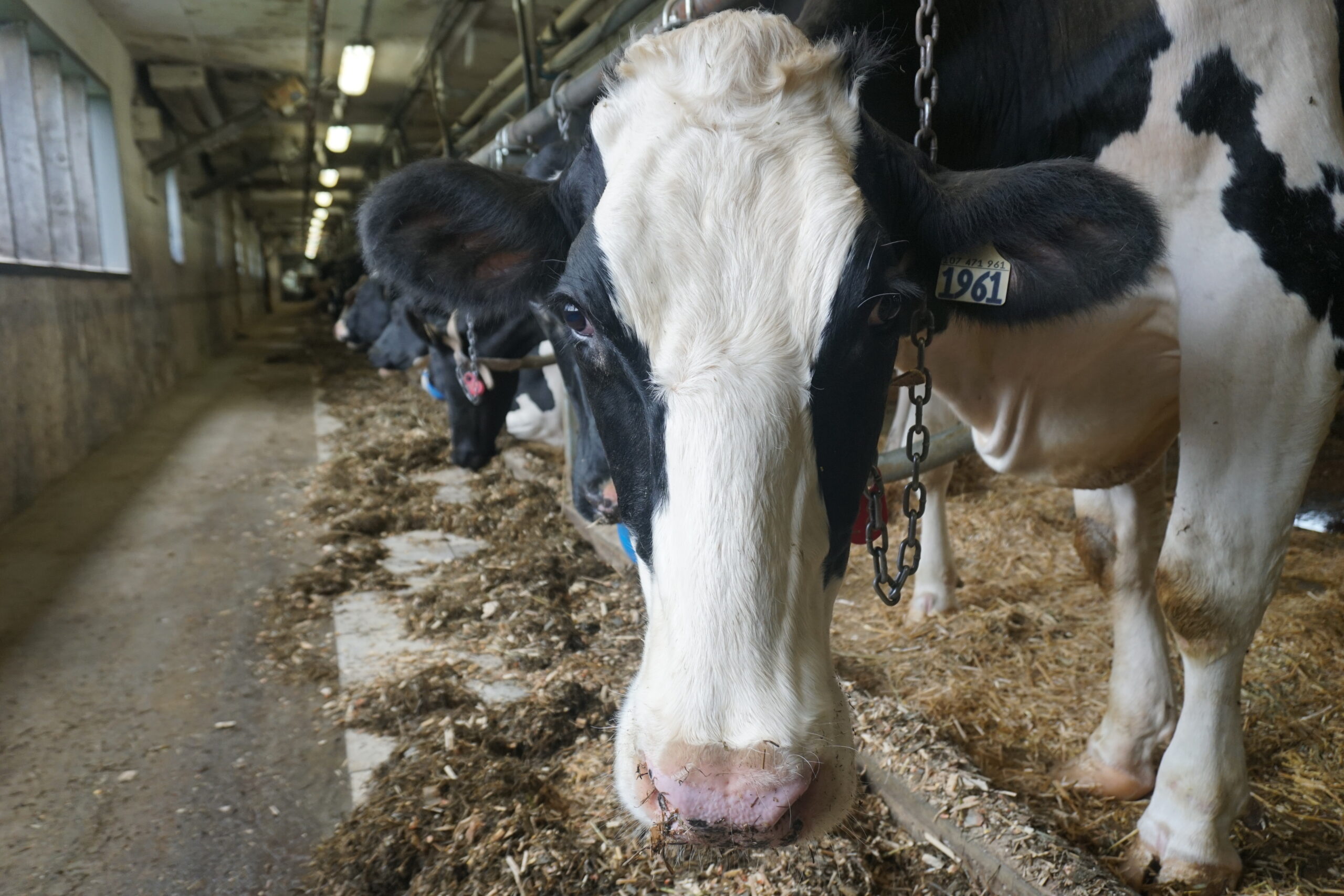Optimizing the efficiency of protein in rations

Project entitled:
Diet strategies to improve protein efficiency on Quebec dairy farms
Cristiano Cortes, Edith Charbonneau, Hélène Lapierre, Daniel Ouellet, Doris Pellerin, Debora SantschiHighlights
- Protein is the most expensive ingredient in rations fed to dairy cows. It accounts for 42% of feed costs.
- However, more than 70% of this investment is excreted by the animals without ever contributing to milk production.
- Dejections contain a large quantity of nitrogen, the base component of the amino acids that form proteins. A ration offering a better balance of amino acids would reduce nitrogen ingestion, consequently lowering feed costs without negatively affecting milk yield.
- Based on research developed by Agriculture and Agri-Food Canada (AAFC) in Sherbrooke, this project aims to demonstrate that it may be profitable on commercial farms to feed cows a diet with a better balance of amino acids.
- After studying the practices in use on 12 commercial farms equipped with feeding robots, the research team will test an amino acid-optimized ration and compare it to the ration normally used on the farm (control ration).
- The results of this project could lead to the development of feed strategies best suited to the reality of dairy farms.
- This project will also serve to showcase technological innovation and encourage the dairy cattle sector to use innovative practices with regard to diet and herd management.
Objectives
The main objective of this project is to validate the use of feed rations with reduced nitrogen levels and balanced amino acids in commercial conditions.
More specifically, the objectives are to:
1) Develop a typology on 12 commercial farms to establish the test rations to be used on the farms based on current practices;
2) Test an amino acid-balanced ration on a group of cows on each of the project’s farms.
Results and potential benefits
The twelve commercial farms (total of 1,000 cows; average of 75 cows per farm) were met with and completed a questionnaire to provide an overview of the farm’s production system (herd management, animal characteristics, milk quality, facilities, human resources). The rations to be tested in the context of this project will be defined based on this analysis. On each farm, the cows will be divided into two groups. The first group will serve as the control group and will receive the farm’s normal diet. The second group will receive a ration with a crude protein content reduced by 1.5%, adjusted for the total need of metabolizable proteins and balanced for amino acids by using lysine, methionine and histidine. This project will also serve to showcase technological innovation and encourage the dairy cattle sector to use innovative practices with regard to diet and herd management. The demonstration will lead to the formulation of rations and dietary supplements based on the cows’ true protein needs. Farmers, consultants, nutritionists and students will all benefit from this research.
Innovative aspects
- Project completed with the diversity and constraints of commercial farms, which bodes well for a rapid adoption of the conclusive results.
- Potential to lower the food costs of herds and reduce the volume of waste emitted into the environment without compromising milk yields.
Professional trained
One Master’s student, Frédérika Nadon, was recruited for the project.
For further information
The research results will be promptly transferable to dairy farmers. An article will be written for the journal Le Producteur de Lait Québécois. In addition, a presentation proposal will be submitted to CRAAQ for the Quebec Dairy Cattle Symposium (Symposium des bovins laitiers). Other communication activities (articles and presentations) are planned for collaborating users (Novalait, Lactanet, etc.). A presentation will also be given at Novalait’s Forum Techno.
Financial contributions
Special call for proposals in dairy production and processing (2016–2021):
- Natural Sciences and Engineering Research Council of Canada (NSERC)
- Quebec consortium for industrial bioprocess research and innovation (CRIBIQ)
- Novalait
- 12 dairy farms (8 in the Saguenay-Lac St-Jean region and 4 in the Quebec City region)
Total budget: $407,729